Comprehensive Guide to Water Quality in Michigan: Contaminants, Issues, and Water Filtration Solutions
by Ryan Moreau / updated February 11th, 2025
Michigan, often known as the "Great Lakes State," has some of the nation’s most abundant freshwater resources. Yet, from aging infrastructure in urban centers like Flint and Detroit to agricultural runoff in rural communities, Michigan faces a myriad of water quality challenges that can impact both public health and the environment. In this comprehensive guide, we explore the most common contaminants found in Michigan’s water sources, discuss regional water quality issues, and recommend effective filtration solutions to keep your household safe.
Before diving into our guide, be sure to try our Water Quality Tool. By simply entering your zip code, you can analyze your local water supply and get customized filtration system recommendations.
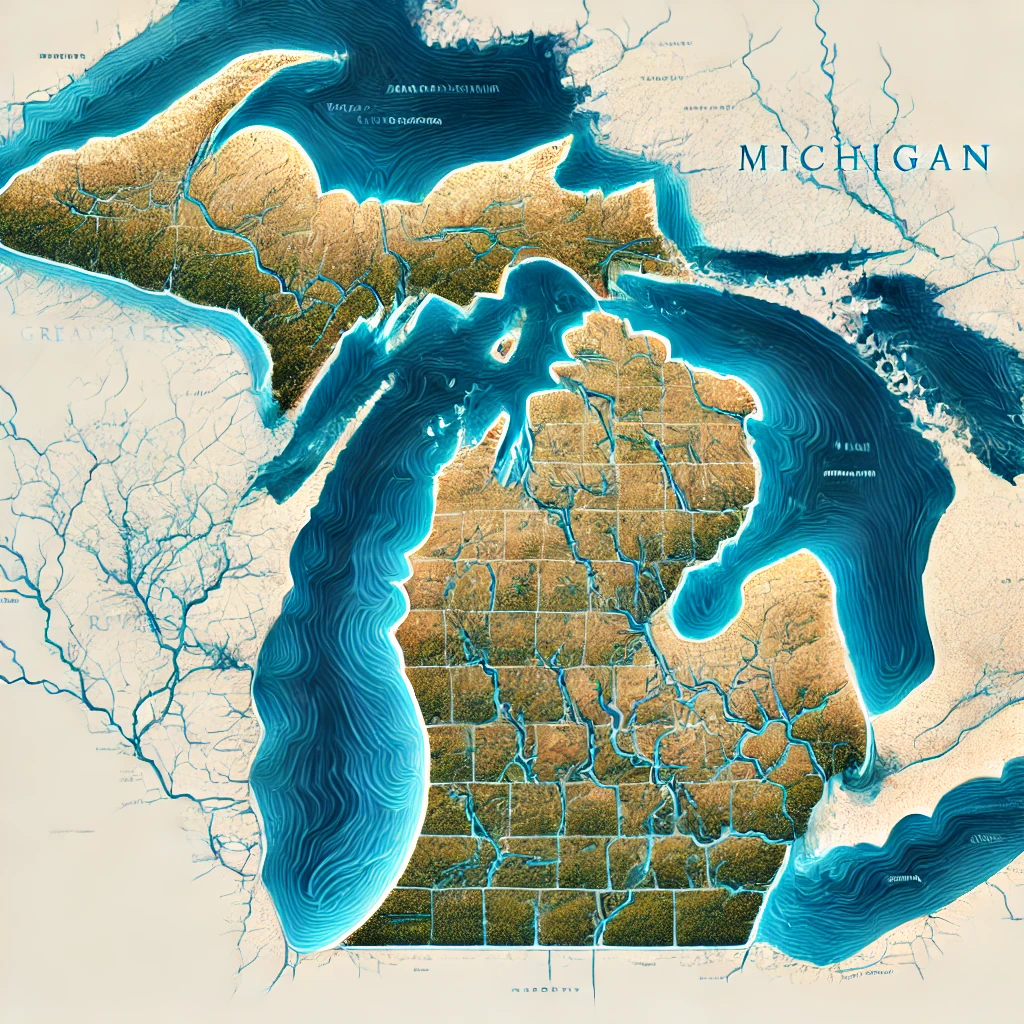
Overview of Michigan's Water Sources
Michigan’s proximity to the Great Lakes gives it one of the most extensive freshwater coastlines in the world. Besides these iconic lakes, the state also relies on:
- Groundwater Aquifers: Many rural households and private wells draw from underground aquifers, which can be vulnerable to nitrate pollution, arsenic, or PFAs.
- Rivers and Inland Lakes: Water systems like the Grand River, Detroit River, and Lake St. Clair provide drinking water to numerous communities and industries.
- Public Water Supplies: Large urban centers such as Detroit and Grand Rapids tap surface water from the Great Lakes, undergoing extensive treatment before distribution.
Despite abundant water resources, safeguarding water quality remains a significant challenge, highlighting the need for proactive monitoring and advanced treatment technologies.
Common Water Quality Contaminants in Michigan
Michigan’s water sources are susceptible to a range of contaminants, reflecting the state’s industrial legacy and agricultural activities. Use our Water Quality Tool to identify which contaminants might be prevalent in your area. Below are some of the most common ones:
1. Per- and Polyfluoroalkyl Substances (PFAs)
PFAs contamination has been detected in multiple Michigan communities, often linked to firefighting foam usage near military bases and industrial facilities. Chronic exposure is associated with immune system issues and higher cancer risks. For further details, see the EPA PFAs Tools or our in-depth PFAs Contamination Guide.
Water Filtration Options for PFAs: Reverse Osmosis Water Filters, Activated Carbon Water Filters
2. Lead and Copper
Michigan’s older pipes and service lines can release lead and copper into drinking water, as seen in the Flint water crisis. These metals pose serious health risks, especially for children and pregnant women.
Water Filtration Options for Lead and Copper: Reverse Osmosis Water Filters, Activated Carbon Water Filters
3. Nitrates
Agricultural runoff from fertilizers commonly elevates nitrate levels in rural groundwater supplies. Excess nitrates can be particularly hazardous for infants, causing methemoglobinemia or "blue baby syndrome."
Water Filtration Options for Nitrates: Reverse Osmosis Water Filters
4. Arsenic
Naturally occurring arsenic is found in certain aquifers across Michigan, particularly in the Lower Peninsula. Chronic exposure can lead to skin lesions, cardiovascular problems, and an increased cancer risk.
Water Filtration Options for Arsenic: Reverse Osmosis Water Filters
5. Iron and Manganese
Many private wells in Michigan contain elevated iron and manganese levels. While not usually harmful to health, they can impart an unpleasant taste, odor, and discoloration.
Water Filtration Options for Iron and Manganese: Whole House Water Filters designed for iron removal and point of use Reverse Osmosis Water Filters
.6. Microbial Contaminants
Rural areas relying on private wells may face bacterial and viral contamination, especially if wells are shallow or poorly maintained. Pathogens like E. coli can pose immediate health risks.
Water Filtration Options for Bacteria and Viruses: UV Purification systems or Reverse Osmosis Water Filters.
7. Chlorine and Disinfection Byproducts
Public water systems often chlorinate water to kill pathogens, but this process can yield disinfection byproducts like trihalomethanes (THMs), linked to increased cancer risks.
Water Filtration Options for Chlorine and Byproducts: Activated Carbon Water Filters, Reverse Osmosis Water Filters
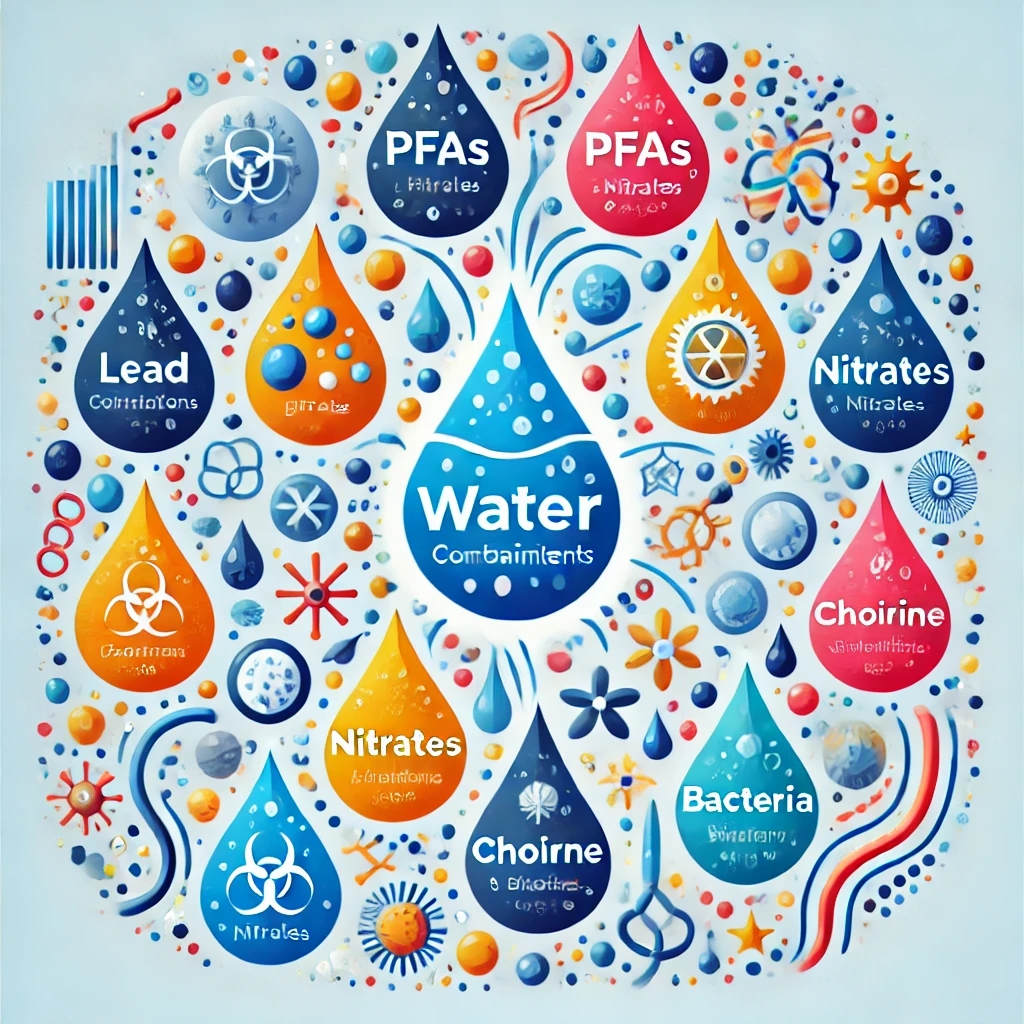
General Water Characteristics in Michigan
Beyond specific contaminants, Michigan's diverse geography contributes to varying general water characteristics across the state. Understanding these characteristics is essential for selecting the appropriate water treatment solutions to ensure the longevity of your plumbing and the quality of your water supply.
1. Water Hardness
Water hardness, caused by high concentrations of calcium and magnesium ions, varies significantly across Michigan:
- Southern Michigan: Areas such as Kalamazoo and Grand Rapids are known for their hard water, primarily due to limestone-rich geology that contributes elevated levels of calcium and magnesium in the water supply.
- Central Michigan: Agricultural regions often experience hard water from groundwater sources rich in minerals from natural deposits.
- Northern Michigan: While some areas have softer water, others, particularly those relying on groundwater, can exhibit moderate hardness levels.
Hard water can lead to scale buildup in pipes and appliances, reducing their efficiency and lifespan. It also affects soap lathering, leaving residues on dishes and skin.
To combat water hardness, water softeners are highly effective. These systems replace calcium and magnesium ions with sodium or potassium ions, effectively softening the water and preventing scale formation.
2. Corrosive Water Conditions
Corrosive water, characterized by water that generally has lower pH, hardness, alkalnity levels and high chloride concentrations, poses significant challenges in certain regions:
- Some Inland Areas: Regions relying on specific groundwater sources may experience varying degrees of water corrosiveness based on local geology.
Corrosive water can cause pipe deterioration, leading to the release of harmful metals into the water supply and necessitating frequent plumbing repairs.
Acid neutralizer filtration systems can mitigate the effects of corrosive water. These systems increase the water's pH level to prevent corrosion of household plumbing.
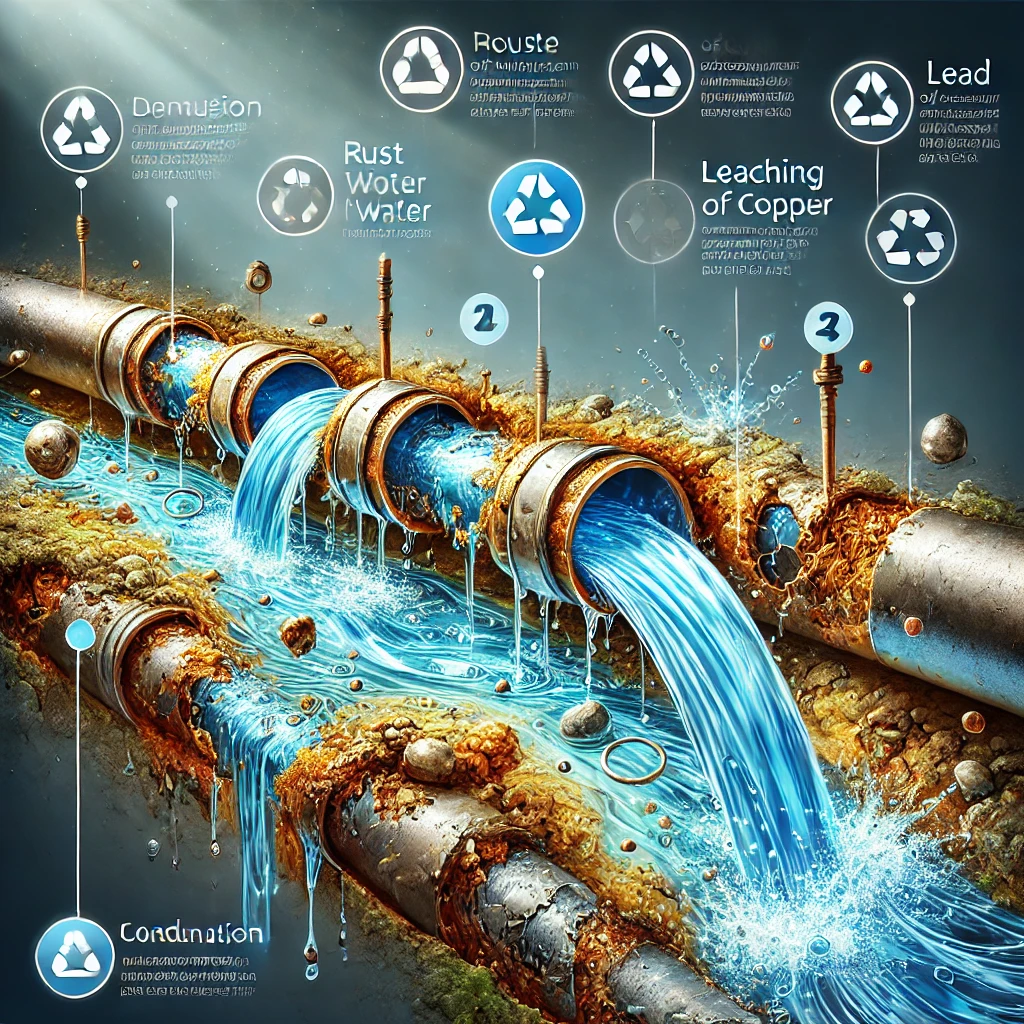
3. Regional Geological Influences
Michigan's varied geological landscape plays a pivotal role in determining water characteristics:
- Glacial Regions: Northern Michigan's glacial history has left behind diverse mineral compositions in the soil and groundwater, affecting water hardness and overall quality.
- Sedimentary Basins: Areas like the Grand River Basin, rich in sedimentary deposits, contribute to higher mineral content in groundwater, influencing water hardness and other quality parameters.
- Volcanic Areas: Though less prominent, certain volcanic deposits can introduce unique mineral compositions into local water sources.
Understanding the geological influences on water quality helps in selecting the most effective filtration systems tailored to specific regional needs.
Regional Water Quality Challenges in Michigan
Michigan’s climate, geology, and industrial history shape the following regional water quality issues:
1. The Great Lakes Basin
While the Great Lakes supply drinking water to countless Michiganders, they are vulnerable to pollutants such as PFAs, mercury, and agricultural runoff. Nutrient pollution can also trigger harmful algal blooms, affecting both aquatic life and human health.
2. Flint and Lead Infrastructure
The Flint water crisis underscored the dangers of corrosive water, inadequate treatment, and aging infrastructure. This incident has spurred ongoing efforts to replace lead service lines throughout the state and implement more rigorous corrosion control measures.
3. Detroit and Industrial Legacy
Detroit and surrounding areas face legacy contamination from historical manufacturing activities. PFAs, VOCs, and heavy metals can seep into groundwater and surface water sources if industrial sites are not properly managed or remediated.
4. Rural Wells and Agricultural Runoff
In rural Michigan, many residents rely on private wells, which can be vulnerable to nitrates, bacteria, and pesticides from nearby farms. Regular testing and the use of targeted filtration systems are essential for maintaining safe drinking water.

Utilizing the Water Quality Tool for Michigan Residents
Maintaining safe water in Michigan requires understanding the contaminants specific to your region. Our Water Quality Tool allows residents to:
- Enter their zip code for a localized water quality analysis
- Identify common contaminants in public or private well supplies
- Receive tailored filtration recommendations for their specific water issues
- Analyze local watershed pollution data.
Recommended Filtration Solutions for Common Michigan Contaminants
Based on the contaminants frequently found in Michigan’s water sources, the following filtration systems are most effective:
1. Activated Carbon Filters
Effective for removing chlorine, certain PFAs, VOCs, and improving taste and odor. Ideal for households on municipal water with chlorine disinfection. Explore our best activated carbon water filters for more info.
2. Reverse Osmosis Systems
Offers broad-spectrum removal of nitrates, arsenic, lead, mercury, and PFAs. Useful for both private wells and municipal supplies. Review our best reverse osmosis water filters to find the right system for your home.
3. Whole House Water Filters
Addresses widespread issues like hardness, corrosion, or elevated iron levels. These systems protect your plumbing and ensure improved water quality throughout the entire house. Check out our best whole house water filters for recommendations.
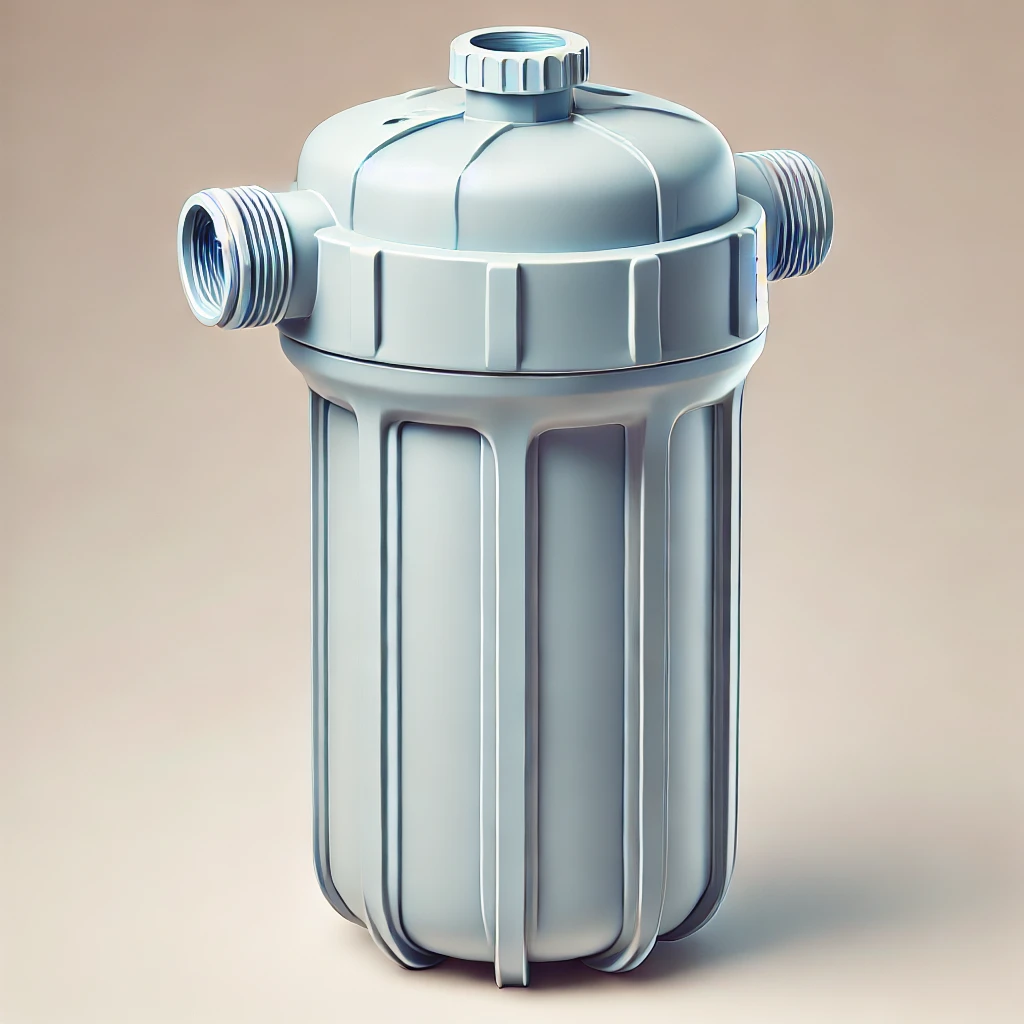
Local Water Testing Services in Michigan
Accurate water testing is paramount for identifying which contaminants are affecting your water supply. We recommend using SimpleLab for a detailed water analysis. Their easy-to-use test kits and professional lab reports help you make data-driven decisions about your water filtration system needs.
Case Studies: Addressing Water Quality Issues in Michigan
Real-world scenarios illustrating how various water quality management strategies are tackling Michigan’s contamination challenges:
1. Flint: Overcoming Lead Infrastructure
Flint’s water crisis demonstrated the repercussions of insufficient corrosion control and outdated water pipes. The city has since undertaken large-scale pipe replacement projects and implemented more rigorous water treatment processes to reduce lead levels. This incident underscores the importance of frequent water testing and effective filtration.
2. Oscoda: Mitigating PFAs Contamination
Military sites in Oscoda used firefighting foams containing PFAs, which leached into nearby wells. Combining activated carbon and reverse osmosis treatments has helped reduce PFAs levels, while continued site monitoring ensures ongoing protection for local residents.
3. Rural Groundwater: Nitrate Management
Some agricultural communities in the Lower Peninsula reported high nitrate concentrations in private wells. Through educational programs on fertilizer application and targeted filtration installations (e.g., reverse osmosis systems), these communities have significantly lowered nitrate levels, safeguarding their drinking water.
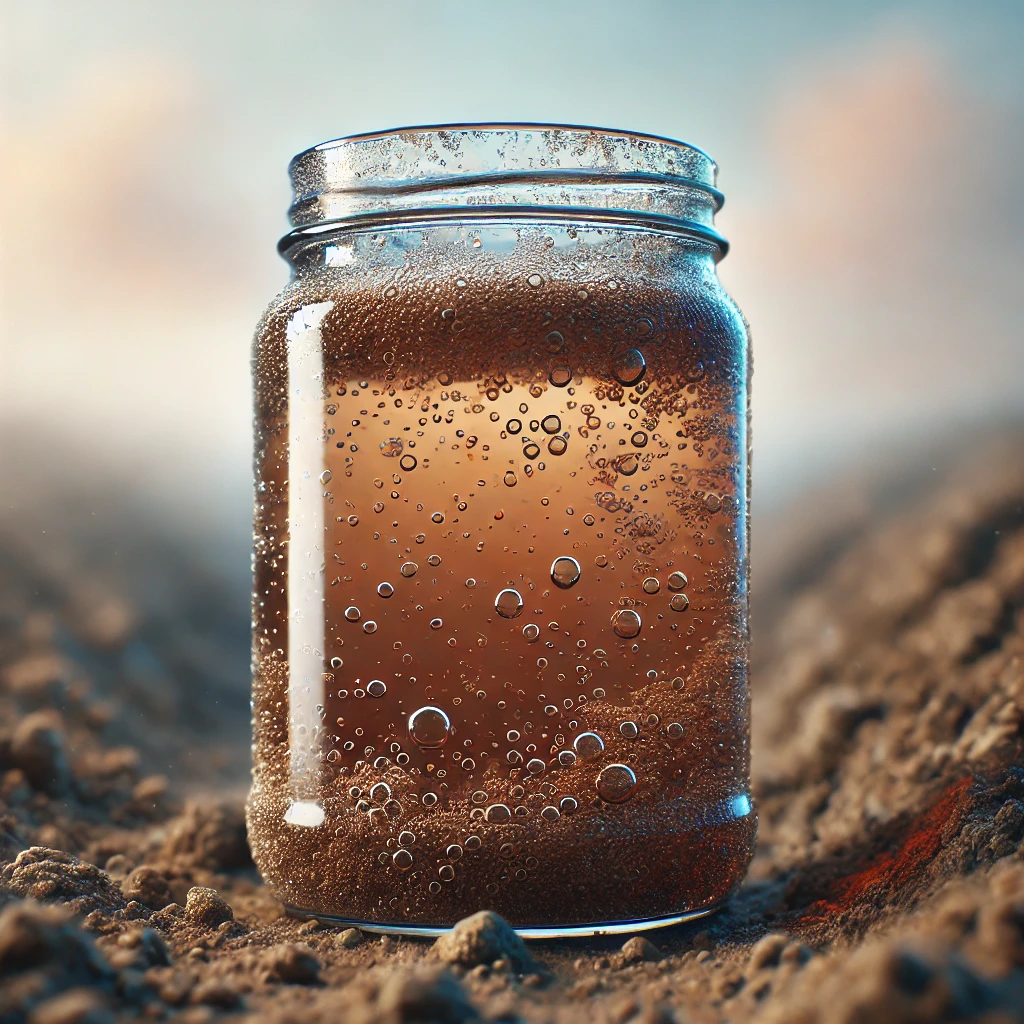
Call to Action
Despite Michigan's wealth of freshwater, issues such as lead contamination, agricultural runoff, and industrial pollutants highlight the ongoing need for vigilance. By understanding your region’s water quality challenges and implementing effective filtration solutions, you can safeguard your household and ensure access to clean, safe water.
Get started by entering your zip code into our Water Quality Tool for a detailed breakdown of your local water supply. Then, explore our filter review articles to find the best system for your home. Finally, confirm your water’s quality with reliable and comprehensive water testing services.
